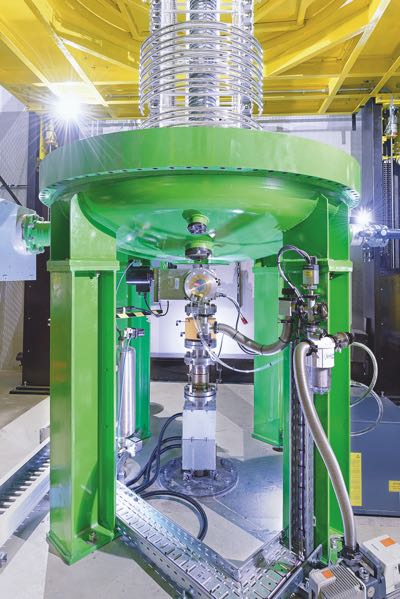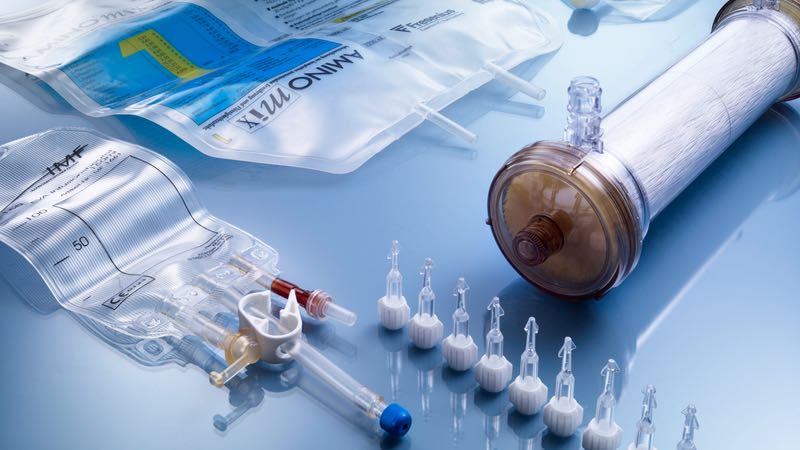Beta-Gamma-Service (BGS), a German sterilisation provider, claims to be one of the pioneers of radiation technology using accelerated electrons (beta rays) and gamma rays. The company has mastered sophisticated techniques for optimising plastics and sterilising devices such as those used in medicine. Dr Dirk Fischer, BGS director of application development, says BGS’s work has shaped and helped to develop ground- breaking processes that are now part of the technological standard and have thus transformed the company into Germany’s largest provider of radiation services.
BGS operates three radiation centres in Germany and has just started work in a new gamma radiation facility at its Bruchsal site, near Karlsruhe, with an annual capacity of up to 80,000 pallets.
Speaking to Cleanroom Technology, Fischer explains the process of radiation to sterilise medical devices and pharmaceutical packaging.
Q: How does sterilisation by radiation occur?
DF: Irradiation is a physical process, which takes place at room temperature. The energy-rich beta or gamma rays destroy the DNA of the microorganisms, thus inactivating them. Sterilisation takes place inside the final packaging. Specific values are used to correctly calculate irradiation parameters for sterilisation. No chemicals are used and there is no radiation after the treatment.
Q: What radiation dose is used to sterilise an item?
DF: The energy of the rays, expressed in millions of electron volts (MeV), describes the strength of the electrical field to accelerate the electrons. It is directly correlated to the ability of the rays to penetrate solid matter. Our plants are designed to a maximum of 10 MeV to avoid activation of products. The dose of radiation, expressed by the unit Gray (Gy), depends on the desired effect to achieve by the radiation. For sterilisation purposes, often a dose in the range of 25 kGy is sufficient.

Radiation sterilisation leaves no residue and can be performed directly in the packaging
Q: When do you use beta and when do you use gamma radiation?
DF: Both beta and gamma rays are suitable for sterilisation. The main difference between them lies in their depths of material penetration and their dose rates. Beta rays offer high dose rate and limited penetration depth whereas gamma rays have high penetration capability and require relatively low dose rate.
Q: What benefits does radiation have?
DF: The reliability and reproducibility of the process.
Q: Are there other reasons for choosing sterilisation by radiation over other methods?
DF: Compared to chemical treatment methods, radiation sterilisation leaves no residue and can be performed directly in the packaging. For a wide range of products, it is the quickest and most cost- effective sterilisation process, especially for large volumes. Products are available immediately after radiation without quarantine or degassing times.
Q: What products can radiation sterilisation be applied to?
DF: Generally, to all products where pathogens pose a risk to human or animal health or where microorganisms can have adverse effects. This includes medical devices, primary pharmaceutical packaging, packaging for cosmetics and food, products for biotechnological applications as well as raw materials for cosmetics, commodities and consumer goods.
Q: Does disinfection by radiation pose a risk to consumer health?
DF: No. Radiation sterilisation is completely residue-free and therefore poses no risk to consumers. This is a great advantage over chemical treatment methods. The energy used in the BGS plants is too low to generate radioactivity in products. For physical reasons, radiation can only trigger chemical reactions in the irradiated products.
Q: What validation occurs to ensure sterilisation is consistent and of high quality? DF: The validation is divided into three parts. Firstly, the microbiological validation is used to set the radiation dose necessary to change a non-sterile product into a sterile one. Dependent on the bioburden, and the resistance to ionising radiation of the microorganisms found, proof is provided by irradiation that this dose can convert all parts into a sterile state. Next, the dosimetric validation ensures that the defined dose is adhered to in all areas, with the given packaging and the predetermined packing arrangement. For this purpose, the irradiation conditions are fixed, and the areas of the packaged product receiving the minimum and maximum doses are documented. Lastly, during application validation, the manufacturer verifies that the sterilised product, including the packaging
material, fulfils the required property profile over the whole shelf-life. Q: What process does BGS apply to sterilise an item? DF: The radiation used by BGS acts through the packaging. There is great flexibility in packaging types and materials, ranging from boxes, bags and pouches to entire pallets. Deciding on the use of optimal packaging is extremely important to evenly apply the dose and ensure good efficiency of the process. Key considerations involve the density of the packaging, the number of items in a pack and the number of layers of packaging. BGS uses automated systems to process its products; this is the preferred option for cost reasons. Radiation sterilisation leaves no residue and can be performed directly in the packaging Even under the best conditions of hygiene, Fischer says, the manufacture of a product, including its packaging, cannot result in a 100% contamination-free, i.e. “sterile” state. He explains: “Customers must ensure a stable bioburden (within defined limits) for the final process step of irradiation to produce ‘sterile’ products. It involves determining the sterilisation dose and the maximum permitted dose by means of the validation. The ‘legal manufacturer’ bears the responsibility for this. BGS ensures that this dose range is maintained.” Fischer says due to the variety and considering the customer’s own requirements, requests must be discussed with the customer and coordinated accordingly. A market trend BGS has seen, Fischer notes, is that companies whose products have been approved via a sterilisation process and are on the market, seek to establish a second service provider. This would ensure continuity of supply should a plant go down or need special maintenance for any reason. Companies supplying the packaging for life saving drugs, for example, need redundancy built into their supply change, to ensure those drugs reach the patient without delay. 
Market trend
